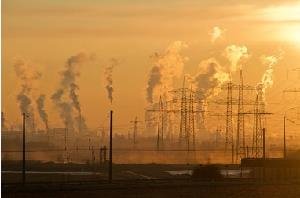Introduction
- Environment means surroundings or conditions in which a person, animal or plant lives. It consists of air, water, soil, land i.e. everything around us.
- Due to certain undesired activities our environment is getting spoiled and the time is not so far when earth will not be able to sustain life
- Lets discuss few important threats and the preventive measures for them
- environment of atmosphere which further has many layer
- There are different layers of atmosphere which are as follows:
- Atmosphere
- Hydrosphere
- Troposphere
- Stratosphere
- We will consider all the layers of atmosphere in more detail as well as we will discuss about the different types of pollution and pollutants.
Atmosphere
Atmosphere is actually an envelope of gases that surround us. Atmosphere serves very important functions like:
- Atmosphere Contain gases which are essential for the life like oxygen, carbon dioxideetc.
- It has water vapor that is important for all life.
- Ozone is present that protect us from ultra violet rays
- It maintains heat balance and by this it controls weather or climatic conditions etc.
Environmental chemistry
“It is a branch of chemistry that deals with the study of chemical phenomenon occupying in the atmosphere.”
Environmental pollution:
It can be defined as the “undesirable change in our surroundings that causes lot of harmful effects.”

The substances that are undesirable and cause lot of harm are called pollutants.
Atmospheric pollution:
- There are different layers of atmosphere and the lower layer or region in which we live is known as troposphere.
- Troposphere contains air, watervapor, clouds; dustetc. in this layer the cloud formation takesplace.
- Atmospherepollution is mainly caused in troposphere and atmosphere.
- The protective layer that is ozone which is found in stratosphere is adversely affected by pollutants and this layer is very important to us as it prevent the entry of ultra violet rays which otherwise can cause lot of diseases.
The major causes of pollution are:
- Fast population growth
- Rapid urbanization
- Industrialization
- Use of pesticides etc.
- Note :There is a difference between a contaminant and a pollutant which as follows:-
Contaminant is not present in nature but is introduced into the environment by human activity
Pollutant is a substance that are produced either by natural source or by human activity and due to increase its concentration the harm is caused to living forms
Threshold limit valueis the permissible limit of a pollutant in atmosphere to which if a healthy worker is exposed for 8hours or 40 hours a week there is no effect on him.